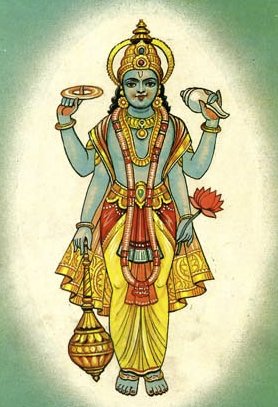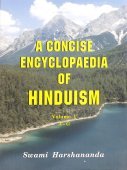Subala, Su-bala, Subāla, Subālā: 16 definitions
Introduction:
Subala means something in Hinduism, Sanskrit, Jainism, Prakrit. If you want to know the exact meaning, history, etymology or English translation of this term then check out the descriptions on this page. Add your comment or reference to a book if you want to contribute to this summary article.
In Hinduism
Vaishnavism (Vaishava dharma)
Source: ISKCON Press: GlossarySubala (सुबल).—The father of Śakuni and Gāndhārī. He was the King of Gāndhāra.

Vaishnava (वैष्णव, vaiṣṇava) or vaishnavism (vaiṣṇavism) represents a tradition of Hinduism worshipping Vishnu as the supreme Lord. Similar to the Shaktism and Shaivism traditions, Vaishnavism also developed as an individual movement, famous for its exposition of the dashavatara (‘ten avatars of Vishnu’).
Purana and Itihasa (epic history)
Source: archive.org: Puranic Encyclopedia1) Subala (सुबल).—General. A King of Gāndhāra. Subala was the father of Śakuni, uncle of the Kauravas. Śakuni was the rebirth of Nagnajit, disciple of Prahlāda. Śakuni inherited the name Saubala from his father Subala whose only daughter was Gāndhārī, mother of Duryodhana. Both Śakuni and Gāndhārī were economic experts. (Ādi Parva, Chapter 63). At the time of the marriage proposal of Gāndhārī the fact of the blindness of Dhṛtarāṣṭra, the prospective bride-groom, worried Subala much, but he married his daughter to the blind King considering the great reputation of the royal family. (Ādi Parva, Chapter 109, Verse 11). Other information. (i) Subala, in the company of his sons Śakuni, Acala and Vṛṣaka participated in the Rājasūya performed by Yudhiṣṭhira. (Sabhā Parva, Chapter 34, Verse 6).
(ii) After the Rājasūya was over it was Nakula, one of the Pāṇḍavas, who led Subala and his sons beyond the boundaries of the Kingdom safely. (Sabhā Parva Chapter 45, Verse 49). (See full article at Story of Subala from the Puranic encyclopaedia by Vettam Mani)
2) Subala (सुबल).—A King of the Ikṣvāku dynasty. His son was a great friend of King Jayadratha. (Vana Parva, Chapter 265, Verse 8).
3) Subala (सुबल).—A son of Garuḍa. (Udyoga Parva, Chapter 101, Verse 3).
Source: Cologne Digital Sanskrit Dictionaries: The Purana Index1a) Subala (सुबल).—A prince of Gāndhāra: his daughter was Gāndhārī, and son Śakuni.*
- * Bhāgavata-purāṇa I. 13. 28-29; III. 1. 14; X. 84. 1.
1b) A son of Sumati, and father of Sunītha.*
- * Bhāgavata-purāṇa IX. 22. 48-49.
1c) A playmate of Kṛṣṇa: wanted to eat the fruits of the palmyra grove then in possession of Dhenuka.*
- * Bhāgavata-purāṇa X. 15. 20; 22 31.
1d) A son of Bhautya Manu.*
- * Brahmāṇḍa-purāṇa IV. 1. 115.
1e) A Nāga.*
- * Brahmāṇḍa-purāṇa IV. 20-54.
1f) Ojasvi of the 14th epoch of Bhautya Manu.*
- * Vāyu-purāṇa 100. 116.
1g) A son of Dṛḍasena and father of Sunīta.*
- * Viṣṇu-purāṇa IV. 23. 8-9.
Subala (सुबल) is a name mentioned in the Mahābhārata (cf. I.63.93, I.63, II.31.6, III.48.25, VI.10.38) and represents one of the many proper names used for people and places. Note: The Mahābhārata (mentioning Subala) is a Sanskrit epic poem consisting of 100,000 ślokas (metrical verses) and is over 2000 years old.

The Purana (पुराण, purāṇas) refers to Sanskrit literature preserving ancient India’s vast cultural history, including historical legends, religious ceremonies, various arts and sciences. The eighteen mahapuranas total over 400,000 shlokas (metrical couplets) and date to at least several centuries BCE.
Shaktism (Shakta philosophy)
Source: Kamakoti Mandali: The Yoginis of Narasimha VyuhaSubālā (सुबाला) is the name of a Mātṛkā-Śakti created by Mahārudra in order to control the plague of demons created by Andhakāsura.—Accordingly, Andhaka-Asura tried to kidnap Umā (Devī Pārvatī), and was fiercely attacked by Mahārudra who shot arrows at him from his mahāpināka. when the arrows pierced the body of Andhakāsura, drops of blood fell to earth and from those drops, thousands of Andhakas arose. To control this plague of demons, Mahārudra created Mātṛkā-Śaktis [viz., Subālā] and ordered them to drink the blood of the demons and drain them dry.
Source: Kamakoti Mandali: Nrisimha matrika-mandalaSubālā (सुबाला) refers to one of the various Mātṛkā-Śaktis created by Rudra in order to destroy the clones that spawned from Andhaka’s body.—Accordingly, [...] Andhakāsura attempted to abduct Girājanandinī (Pārvatī) and thus ensued a fierce battle between Andhakāsura and the great Rudra, the Lord of Umā. Like raktabīja, every drop of blood that fell from the body of Andhaka created another Asura like him and in no time, the entire world was filled with Andhakas. To destroy the growing number of Andhakas, Rudra created innumerable Mātṛkā-Śaktis [viz., Subālā]. These Śaktis of immense power at once began to drink every drop of blood that flowed from the body of Andhaka, but they could still not effectively contain the emergence of more and more demons.

Shakta (शाक्त, śākta) or Shaktism (śāktism) represents a tradition of Hinduism where the Goddess (Devi) is revered and worshipped. Shakta literature includes a range of scriptures, including various Agamas and Tantras, although its roots may be traced back to the Vedas.
Ayurveda (science of life)
Veterinary Medicine (The study and treatment of Animals)
Source: Shodhganga: Portrayal of Animal Kingdom (Tiryaks) in Epics An Analytical studySubala (सुबल) (lit. “one who is very powerful”) is a synonym (another name) for Garuḍa, according to scientific texts such as the Mṛgapakṣiśāstra (Mriga-pakshi-shastra) or “the ancient Indian science of animals and birds” by Hamsadeva, containing the varieties and descriptions of the animals and birds seen in the Sanskrit Epics such as the Ramayana and Mahabharata.

Āyurveda (आयुर्वेद, ayurveda) is a branch of Indian science dealing with medicine, herbalism, taxology, anatomy, surgery, alchemy and related topics. Traditional practice of Āyurveda in ancient India dates back to at least the first millenium BC. Literature is commonly written in Sanskrit using various poetic metres.
General definition (in Hinduism)
Source: Wisdom Library: HinduismSubala (सुबल, “beautiful strength”):—One of the six sons of Garuḍa (vehicle of Viṣṇu) and his wife Unnati, according to the Purāṇas. Garuḍa represents the mantras of the Vedas which carry the Lord of Sacrifices.
In Jainism
General definition (in Jainism)
Source: archive.org: TrisastisalakapurusacaritraSubala (सुबल) is the name of an ancient king from Pundarīkiṇī and a previous incarnation of Acala, according to chapter 4.1 [śreyāṃsanātha-caritra] of Hemacandra’s 11th century Triṣaṣṭiśalākāpuruṣacaritra: an ancient Sanskrit epic poem narrating the history and legends of sixty-three illustrious persons in Jainism.
Accordingly:—“Now, in the city Pundarīkiṇī, the crest-jewel of East Videha, Subala was king. He ruled the earth for a long time. At the right time he became a mendicant under Muni Vṛṣabha, performed penance for a long time, died, and went to an Anuttara-palace”.

Jainism is an Indian religion of Dharma whose doctrine revolves around harmlessness (ahimsa) towards every living being. The two major branches (Digambara and Svetambara) of Jainism stimulate self-control (or, shramana, ‘self-reliance’) and spiritual development through a path of peace for the soul to progess to the ultimate goal.
Languages of India and abroad
Sanskrit dictionary
Source: DDSA: The practical Sanskrit-English dictionarySubala (सुबल).—a. very powerful. (-laḥ) 1 Name of Śiva.
2) Name of the father of Śakuni.
Subala is a Sanskrit compound consisting of the terms su and bala (बल).
--- OR ---
Subāla (सुबाल).—a. very childish.
Subāla is a Sanskrit compound consisting of the terms su and bāla (बाल).
Source: Cologne Digital Sanskrit Dictionaries: Cappeller Sanskrit-English DictionarySubala (सुबल).—[masculine] [Name] of a myth. bird etc.
--- OR ---
Subāla (सुबाल).—[adjective] very foolish.
Source: Cologne Digital Sanskrit Dictionaries: Monier-Williams Sanskrit-English Dictionary1) Subala (सुबल):—[=su-bala] [from su > su-pakva] m. ‘very powerful’, Name of Śiva, [Mahābhārata]
2) [v.s. ...] of a mythical bird (son of Vainateya), [ib.]
3) [v.s. ...] of a son of Manu Bhautya, [Mārkaṇḍeya-purāṇa]
4) [v.s. ...] of a son of Sumati, [Viṣṇu-purāṇa]
5) [v.s. ...] of a king of the Gāndhāras (father of Śakuni and the wife of Dhṛta-rāṣṭra), [Mahābhārata; Harivaṃśa; Bhāgavata-purāṇa]
6) Subāla (सुबाल):—[=su-bāla] [from su > su-pakva] mfn. very childish, [Rāmāyaṇa]
7) [v.s. ...] m. a good boy, [Buddha-carita xiii, 36]
8) [v.s. ...] a god, [cf. Lexicographers, esp. such as amarasiṃha, halāyudha, hemacandra, etc.]
9) [v.s. ...] n. Name of an Upaniṣad
Source: DDSA: Paia-sadda-mahannavo; a comprehensive Prakrit Hindi dictionary (S)Subala (सुबल) in the Sanskrit language is related to the Prakrit word: Subala.
[Sanskrit to German]
Sanskrit, also spelled संस्कृतम् (saṃskṛtam), is an ancient language of India commonly seen as the grandmother of the Indo-European language family (even English!). Closely allied with Prakrit and Pali, Sanskrit is more exhaustive in both grammar and terms and has the most extensive collection of literature in the world, greatly surpassing its sister-languages Greek and Latin.
Prakrit-English dictionary
Source: DDSA: Paia-sadda-mahannavo; a comprehensive Prakrit Hindi dictionarySubala (सुबल) in the Prakrit language is related to the Sanskrit word: Subala.
Prakrit is an ancient language closely associated with both Pali and Sanskrit. Jain literature is often composed in this language or sub-dialects, such as the Agamas and their commentaries which are written in Ardhamagadhi and Maharashtri Prakrit. The earliest extant texts can be dated to as early as the 4th century BCE although core portions might be older.
Kannada-English dictionary
Source: Alar: Kannada-English corpusSubala (ಸುಬಲ):—[noun] effective strength or power.
Kannada is a Dravidian language (as opposed to the Indo-European language family) mainly spoken in the southwestern region of India.
See also (Relevant definitions)
Partial matches: Bala, Cu, Shu.
Starts with: Subalacandra, Subalacandra acarya, Subaladhi, Subalagrama, Subalaka, Subalaputra, Subalavat, Subalaya, Subalopanishad.
Ends with: Ishubala.
Full-text (+9): Saubala, Subalaputra, Gandhari, Subalavat, Subalacandra, Vrishaka, Subalagrama, Sunita, Gandhararaja, Kalikeya, Shakuni, Arjava, Carmavan, Dridhasena, Unnati, Vrishabha, Sunitha, Gaja, Gavaksha, Sumati.
Relevant text
Search found 30 books and stories containing Subala, Su-bala, Subāla, Subālā, Su-bāla; (plurals include: Subalas, balas, Subālas, Subālās, bālas). You can also click to the full overview containing English textual excerpts. Below are direct links for the most relevant articles:
Bhakti-rasamrta-sindhu (by Śrīla Rūpa Gosvāmī)
Verse 4.3.12 < [Part 3 - Chivalry (vīrya-rasa)]
Verse 3.3.46 < [Part 3 - Fraternal Devotion (sakhya-rasa)]
Verse 3.3.75 < [Part 3 - Fraternal Devotion (sakhya-rasa)]
Garga Samhita (English) (by Danavir Goswami)
Verse 1.4.1 < [Chapter 4 - Description of Questions About the Lord’s Appearance]
Verse 1.17.31 < [Chapter 17 - Description of the Yogurt Theft]
Verse 2.7.17 < [Chapter 7 - Kidnapping of the Calves and Cowherd Boys]
Thirty minor Upanishads (by K. Narayanasvami Aiyar)
Subala Upanishad of Shukla-yajurveda, Chapter XVI
Subala Upanishad of Shukla-yajurveda, Chapter XII
Puranic encyclopaedia (by Vettam Mani)
Mahabharata (English) (by Kisari Mohan Ganguli)
Brahma Sutras (Ramanuja) (by George Thibaut)
Sutra 2.3.14 < [Second Adyaya, Third Pada]
Sutra 1.4.27 < [First Adhyaya, Fourth Pada]
Sutra 1.2.19 < [First Adhyaya, Second Pada]
Related products
